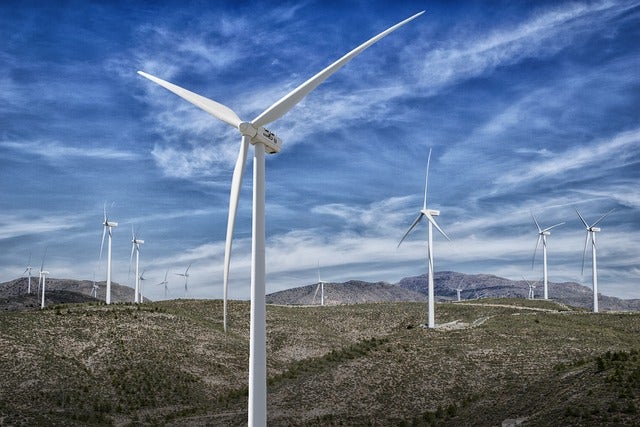
In January, during the cold spell in the UK, system operator National Grid activated its Demand Flexibility Service whereby households could elect to reduce electricity consumption during a specific time window and be financially compensated. The system was activated twice in January, with standby coal units also told to warm-up, up in anticipation of tight supply margins. In the event, there was sufficient supply, but not in the right location. While households were being asked to reduce consumption, wind farms were being paid not to generate.
According to data from the UK Wind Curtailment Monitor, wind farms were paid about £65,000 to stop producing enough electricity to power 50,000 homes for a day, while households were being financially incentivised to reduce consumption. Over the course of two days in January amid tight power supply and rising demand, wind farms were paid more than £1 million to stop producing enough electricity to power 360 000 homes for a day.
This is not an isolated incident. According to UK Wind Curtailment Monitor data, in 2022 consumers paid £215 million to turn wind farms off, and £717 million to buy gas-fired power to make up the difference. And National Grid forecasts that levels of curtailment will increase fourfold by 2030, with costs forecast to reach £2.5 billion a year by the end of this decade.
Advocates of curtailment argue it’s a necessary cost to ensure the UK generation market operates at peak efficiency and that these escalating costs should not deter increasing investment in wind capacity. Yet rising curtailment costs are economically unsustainable and highlight a blinkered approach to renewable investment.
Curtailment costs are a consequence of rapid investment in wind capacity without the associated investment in transmission capacity, meaning that at times of high wind speeds National Grid pays producers to switch off rather than overload the local system, with the costs passed on to household energy bills. Producers offer the price at which they are willing to switch off, which is normally around the market rate for electricity, and by switching off, producers can make rates well above their fixed prices. Simply put, it can be more profitable for wind farms not to generate than to supply electricity to the grid.
Most of the curtailment payments go to wind farms on and off the shores of Scotland. As the windiest region in the UK, it makes sense to develop wind capacity, yet Scotland has a fraction of the power demand compared with southern England where there is less wind capacity and more local opposition to wind turbines blighting the landscape. Curtailment costs are a consequence of poor energy planning and the lack of incentives to build new wind capacity close to demand centres and the failure to invest in an integrated and coordinated grid.
According to National Grid, investment of up to £16 billion in transmission infrastructure will be needed to integrate existing and planned wind capacity development over the next two decades.
Mitigating rising curtailment costs should be a priority for the UK government’s new Department for Energy Security and Net Zero and should form part of a wider reform of the UK energy market. With elevated wholesale power prices expected to continue in the short- to medium-term the government needs to focus on cost reductions to reduce fuel poverty and support economic growth.
In 2022, non-energy costs for UK power supply to an industrial customer averaged £75/MWh yet network costs only averaged £26/MWh with the remaining costs associated with climate change and renewable subsidies. With network costs increasing with infrastructure investment recovery the government should look at removing renewable subsidies from power tariffs to general taxation at the local level. It should also develop a new renewable investment incentive scheme to reduce the transmission investment capacity cost required to ensure curtailment of new wind capacity is minimised. And if the government is sincere in its aim to reduce wholesale costs it must move away from system marginal pricing and develop a pricing mechanism that better reflects Britain’s power generation becoming predominantly driven by renewable resources.
In the 1980s and 90s, the UK was the leading power market innovator, yet for the two decades, it has mostly just created new subsidies to support renewables, with an energy policy directed by the demands of the climate lobby raising the UK’s sustainability at the cost of supply security, and impacting affordability. Curtailment costs are a notable consequence of a failure to develop an energy infrastructure that balances sustainability requirements with supply security, and a failure to develop a pricing system that fairly recovers costs and incentivises operational efficiency.
If the current government wants to leave office with a meaningful legacy, this is its opportunity.
This article also appeared in Modern Power Systems magazine.






